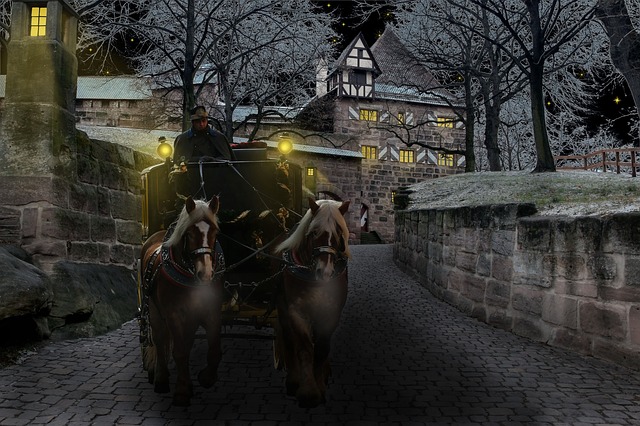June 25, 2018
Metatextuality in Dracula: Approaching the Meta-Gothic
Note: the following article on metatextuality in Dracula is a modified excerpt (pp. 163-165) from my doctoral dissertation, “Time is Everything with Him”: The Concept of the Eternal Now in Nineteenth-Century Gothic, which can be downloaded (for free) from the Tampere University Press pages. For a list of my other academic publications, see the related page of my website.
Intertextuality and Metatextuality in Dracula
Gothic texts regularly display a connection to other texts, especially Gothic ones. This occurs as means to self-reference, and also to facilitate a certain temporal association. Bram Stoker’s Dracula refers to a number of Shakespearean works, to Samuel Coleridge’s The Rime of the Ancient Mariner and Christabel, and to John Keats’s “La Belle Dame sans Merci”, among others. Under these allusions exists a vast, complex network of interconnected meanings. These metatextual beacons create a connection of any given Gothic narrative with its tradition, at the same time perhaps assigning new meaning to its predecessors, much like Jorge Luis Borges’s claim in “Kafka and His Precursors”, where he compares Kafka’s work to some older texts:
Kafka’s idiosyncrasy, in greater or lesser degree, is present in each of these writings, but if Kafka had not written we would not perceive it; that is to say, it would not exist … The fact is that each writer creates his precursors. His work modifies our conception of the past, as it will modify the future. (1964, 108; emphasis in the original)
In many ways, the Gothic seems to be ontologically aware of itself, Indeed, on many occasions the term “meta-Gothic” could be employed to describe texts that “[reflect] upon the meaning of Gothic conventions, disclosing the points of connection between genre and discourse” (Miles 1993, 96).

Metatextuality in Dracula: From Reading to Writing to Reading
The continuous allusion to the act of writing/reading becomes an essential aspect of the metatextual Gothic essence. This fact becomes more apparent considering the (post)modern influences that the passage of time has brought to the Gothic mode. In any case, and beyond existing literary boundaries, the Gothic essence in general is strongly metatextual, and as a result it exists in a constant state of flux and literary doubt, occasionally even as a pastiche of other genres.
What makes the Gothic postmodern in nature is this very act of skepticism, on textual as well as metatextual levels. In Dracula, a novel that constantly underlines the fact that it is a literary product, on more than one level, this is made almost explicit. The character of Professor Van Helsing claims “[w]e have been blind somewhat; blind after the manner of men, since when we can look back we see what we might have seen looking forward if we had been able to see what we might have seen!” (Stoker 2003, 333). In this enigmatic phrase, Van Helsing essentially describes the processes associated with the act of reading:
The reader is always looking backward as well as forward, actively restructuring the past in light of each new bit of information … Assumptions about causality lead to conjectures about the future; at the same time, the facts of the present lead to the construction of new retrospective causal chains … We read events forward (the beginning will cause the end) and meaning backward (the end, once known, causes us to identify its beginning). (Martin 1986, 127)
And so, that this means is that Van Helsing and his party are at the same time actors, readers, and ultimately writers of the very story in which they partake.
Postmodernism and Metatextuality in Dracula
This postmodern approach has been proven to be as immortal as Count Dracula himself. Wendy Doniger mentions that “[a]ctors playing actors playing self-imitating vampires have had a long run in Hollywood” (2005, 19), with Neil Jordan’s Interview with the Vampire (1994), an adaptation of Anne Rice’s novel, being a prime example. In the characteristically postmodern “Theatre Des Vampires” scene, where vampires perform in front of an audience comprised of humans, the character of Louis notices that what he sees is “vampires pretending to be humans pretending to be vampires”.
As a result, the implied question is to what extent fiction and reality are separated, if at all. It is pertinent to remember that, according to Roland Barthes, “the first actors separated themselves from the community by playing the role of the Dead: to make oneself up was to designate oneself as a body simultaneously living and dead” (Wiseman 1989, 138).
However, there is more. This Hegelian hybridization, the synthesis of contradiction in extremis, is applicable in more direct temporal terms as well, related to the eternal now. Barthes, in fact, explicitly acknowledged the essential identification between reading and writing. In more detail, he argues that “the modern scriptor is born simultaneously with the text … there is no other time than that of the enunciation and every text is eternally written here and now” (qtd. in West-Pavlov 2013, 9; emphasis in the original).
Works Cited
Borges, Jorge Luis. “Kafka and His Precursors”. Other Inquisitions 1937–1952. Trans. Ruth L.C. Simms. New York: Simon and Schuster, 1964.
Doniger, Wendy. The Woman who Pretended to Be who She Was: Myths of Self-Imitation. New York: Oxford University Press, 2005.
Interview with the Vampire. Directed by Neil Jordan. Geffen Pictures, 1994.
Martin, Wallace. Recent Theories of Narrative. Ithaca and London: Cornell University Press, 1986.
Miles, Robert. Gothic Writing 1750–1820, A Genealogy. London: Routledge, 1993.
Stoker, Bram. Dracula. London: Penguin, 2003.
West-Pavlov, Russell. Temporalities. Oxon: Routledge, 2013.
Wiseman, Mary Bittner. The Ecstasies of Roland Barthes. New York: Routledge, 1989.
For more on metatextuality in Dracula read: Angelis, Christos. “Time is Everything with Him”: The Concept of the Eternal Now in Nineteenth-Century Gothic. Doctoral Dissertation. Tampere, Finland: Tampere University Press, 2017. Available from the repository of the Tampere University Press.
Comments are closed for posts older than 90 days